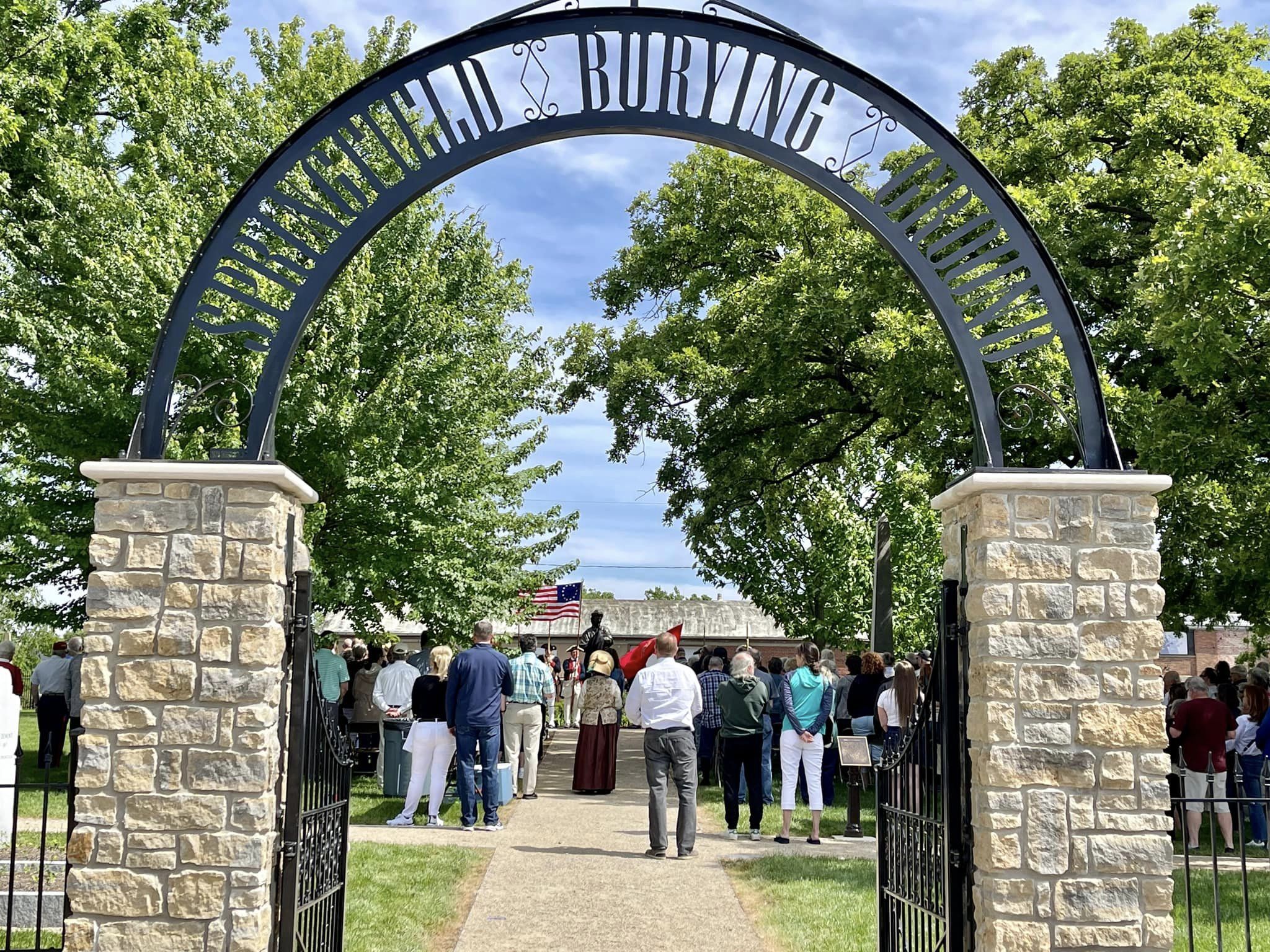SPRINGFIELD BURYING GROUND
Although I did not know it at the time, the spark that led me to dedicate my life to history – or rather to the concept that we can use the past to help build a better future – occurred in a historic burying ground. I was visiting Boston with my family and our travels took us to the Old Granary. Like the soil beneath our feet today, it holds the remains of that community’s most distinguished citizens. Hundreds of thousands of people visit that sacred landscape every year, just to stand in proximity to the mortal remains of people who lead meaningful, momentous lives. I had the opportunity to visit again just a few days ago and I found the experience to be just as powerful as it was to me as a young man – it’s a combination of mysticism, wonder, and reverence – a timeless connection to those who came before us – those whose deeds – both good and bad – led to the creation of the lives we live today.
The pioneers James and Elizabeth Demint settled this land on the banks of the Lagonda River in 1799, four years after the Treaty of Greenville opened this portion of the Northwest Territory to western settlement. James Demint’s original plat contained ninety-six lots over 60 acres, with a large public green at the intersection of the village’s two principal streets. This burying ground was located 470 feet outside the settlement’s western boundary, just north of the earliest road to Dayton. At the turn of the 19th century, this was picturesque landscape of native old-growth trees and wild prairie grasses. A fast-moving stream formed the cemetery’s eastern edge. Its deep banks provided ample drainage, making this land ideal for cemetery purposes. The selection was based on necessity - the village had no other viable option. The land to the south was ideal, but it was owned by another speculator. To the north was a mucky river and steep cliffs. To the east a large swamp. And, as such, this became the plot of land where the fledgling community decided to bury their dead.
The land beneath our feet is hallowed ground, holding the mortal remains of roughly 1200 people – blacksmiths and carpenters, entertainers and artists, bakers and brick makers, distillers and millers, coppersmiths and tailors, homemakers and bootmakers, farmers and physicians. Mothers, fathers, daughters, and sons. It holds the remains children who were stricken with cholera, elderly pioneers who were unwillingly dragged westward by their ambitious offspring, babies whose lives were taken all too soon, and countless mothers who died during childbirth. We will sadly never know their stories, but we can imagine the lives that they lived – and those who missed them when they were gone. We might be separated by 200 years, but we are connected by a shared understanding of the grief felt when we lose someone that we love.
This ground is also the eternal resting place of remarkable people whose names we do know and whose stories have been passed down through the ages. This includes Revolutionary War veterans like James Kelly, who spent a terrible winter with George Washington at Valley Forge. He returned from the war missing part of his ear – lost to frostbite – and part of his nose – which was on the receiving end of a British musket ball. Or Cornelius Toland, who came to America as a Redcoat, but switched sides and ended the war as a Patriot under the command of Mad Anthony Wayne. It is the resting place of trailblazing women like Elizabeth Foos, the unofficial first lady of Springfield, and (this is a quote) “the beloved Consort of Griffith Foos whom she stood beside with a loaded gun, guarding against Indian attacks when this region was a wilderness.” Or my favorite, Granny Icenbarger, who was described in early texts as “no ordinary person”. She was beloved for her cakes and homemade beer, which she used to support her family due to her husband’s drunkenness (perhaps due to the fact that he lived in a brewery).
This cemetery also holds the remains of religious leaders like Saul Henkle, who served as a moral compass in this frontier community, and political leaders like Charles Anthony, who as speaker of the Ohio House of Representatives oversaw a joint resolution protesting the annexation of Texas! God may bless Texas, but that does not mean Ohioans need to. This sacred ground is believed to be the eternal resting place Robert Bradley, who was likely born into slavery, but found freedom across the Ohio River and home in Springfield. As part of the Underground Railroad, his household served as a sanctuary for countless others escaping from this wicked institution. And then there is Elijah Beardsley, who at the young age of 13, stumbled upon a gang of men dressed as Indigenous Americans and helped them dump tea into the Boston Harbor! His compatriots rest eternally in the Granary Burying Ground, the same place that made such an impact on the then young impressionable historian who stands before you today.
These are the stories that will ignite a passion for history in the minds of young visitors and attract curious tourists from across the country. Springfield’s newest destination is 222 years old. But, most importantly, this restored ground will serve as an anchor in our community – a park for nearby residents, a quiet place of reflection for those in need of tranquility, and a place where future community leaders will find inspiration from those who came before as they envision Springfield’s continued prosperity in the 21st century and beyond.

Dedication of the Springfield Burying Ground (Greater Springfield CVB)